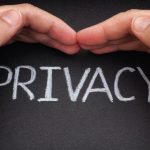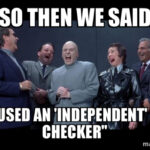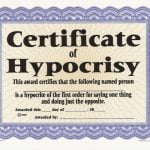Protection From Internet Dangers
A recent survey found that 2.7 million (41 per cent) of Australia’s 6.6 million households had computers, with between a third and a half of these households hooked up to the Internet. In Victoria, every school is to be online by the end of the year.
The Internet offers an ever-widening reservoir of information that can be of great benefit to those who properly use it. However, it is also home to an increasing amount of unsavoury material some of which can pop up where least expected. This includes pornography in all forms, paedophilia, sado-masochism and bestiality.
If all schoolchildren have access to the Net, who will monitor them? One teacher keeping an eye of 30 students?
Many of the software programs meant to restrict access to “cyberporn ” are far from foolproof. They can be easily circumvented. Indeed, one analyst found “profound flaws in the effectiveness of such software”.
Such concerns are not imaginary. A recent survey has found that sex is the most popular topic on the Internet. Indeed, one sex counselor said this is going to be “the next sexual revolution”. A New York researcher said “sex drives the Internet and the World Wide Web. The editor of Australian Net Guide magazine said that up to half all Internet traffic is sex-related: “A lot of people don’t have the courage to enter a newsagent’s shop and walk out with a sex book.” But on the Net they can find privacy and convenient access.
Even with the best intentions, parents cannot always control their children’s Net searches. One mother recently ran a Web search for her daughter using the words “I love horses”. The search results included an essay promoting bestiality. One search for “kids’ toys” resulted in not just innocuous sites such as “Cabbage Patch Kids” but the following: “Smut King Domain”, “Sex Hunters-Your Wife Naked”, and “Erotic Escapades”.
A friend recently told me of his experience. He wanted some slate flooring as he was renovating his home, so he thought he would surf the Net for information. The search engine gave him everything available on slate, including one Web site where two homosexuals were cavorting in the woods. Evidently one of the homosexuals was named Slate, so their little frolic was included in the search results. One study has found that 35 new pornographic Web sites go on line in America every day.
Parental supervision and direction are the principal ways to help shield children from such material. And such parental input needs to be buttressed by government help. But such assistance is not always available.
The US Supreme Court has recently ruled that Americans have a constitutional right to view pornographic material on the Internet even though children may also access it. In a 7-2 decision, the court overturned last year’s Communications Decency Act which banned sexually explicit material to anyone under age 18. Now it says that it is more important that adults can see this material than that children should be protected from it.
Cathy Cleaver of the Washingtonbased Family Research Council said: “As of today, the floodgates are open and pornographers can invite children in”. The American ruling could affect moves in Australia to tighten up the accessibility of pornography on the Internet.
A Federal parliamentary committee has been looking into the issue. Its report makes 15 recommendations including; “All States and Territories amend their classification and/or censorship legislation to make it an offence to transmit objectionable material and to cover the transmission of material unsuitable for minors through computer on-line services”. (Recommendation 8 ).
Other recommendations call for a classification system similar to the broadcast media. Predictably, such recommendations have outraged civil libertarians and those groups with a vested interest, but they remain a good first step.
[625 words]



















